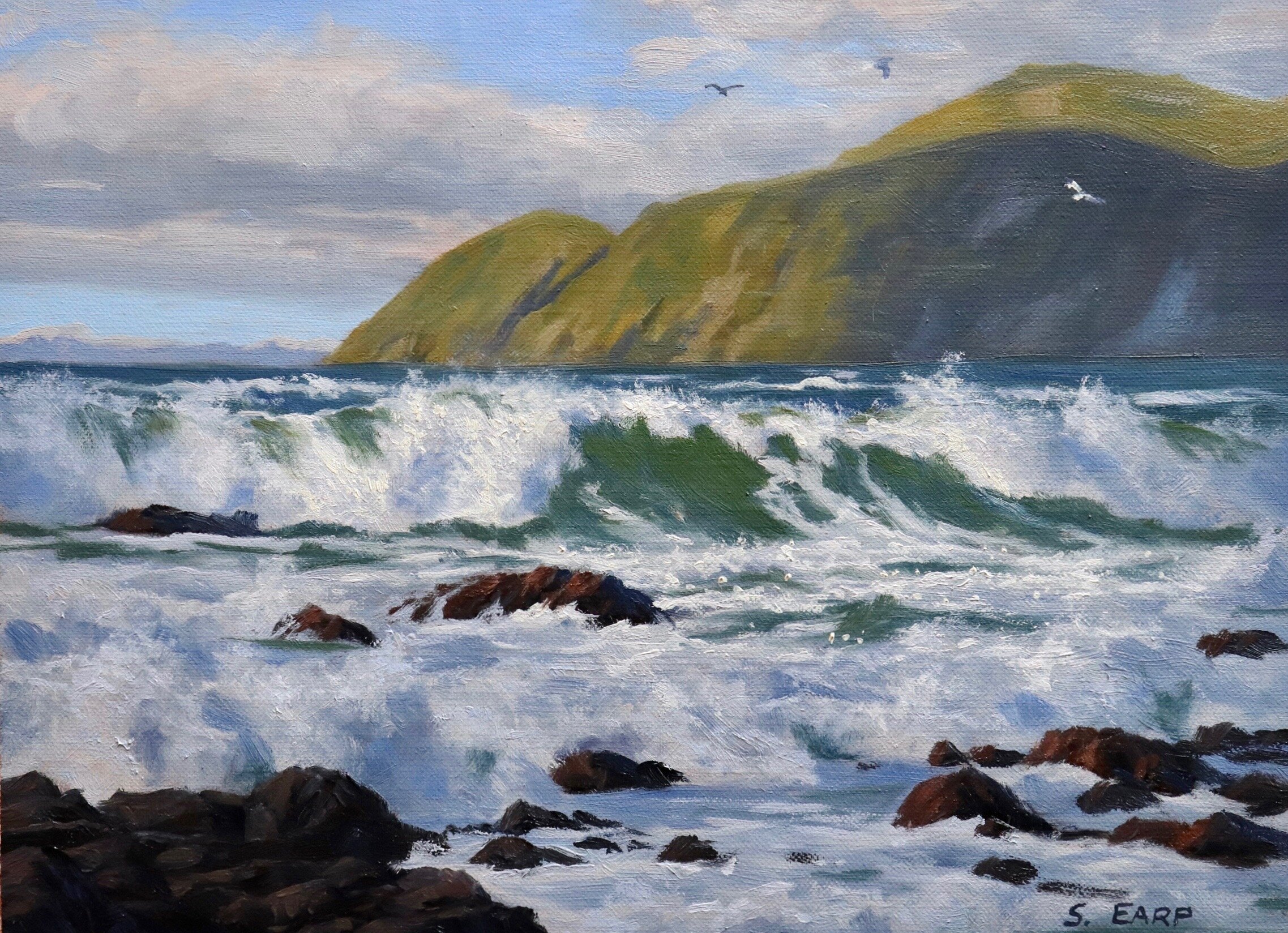
In this painting demonstration I will show you how you can create light in a seascape painting. This painting is inspired by a place called Owhiro Bay on the coast of Wellington in New Zealand. The beach is south facing and as it is in the southern hemisphere the sun shines from the north and directly onto the breaking waves.
Breaking waves are easier to paint when they are backlit but they can still look great in paintings even when the sun is shining on them. In this painting I have used a spotlight effect to emphasise the breaking wave. The foreground is in a half shadow from a cloud. The cliffs in the mid ground are also light with part shade. This also adds interest to the painting.
I have painted this art work in oils but you can also use acrylics as well.
Reference Photos
Here are some of the reference photos I took and used in this painting. Please feel free to use them or copy them if you would like to have a go at painting this art work.
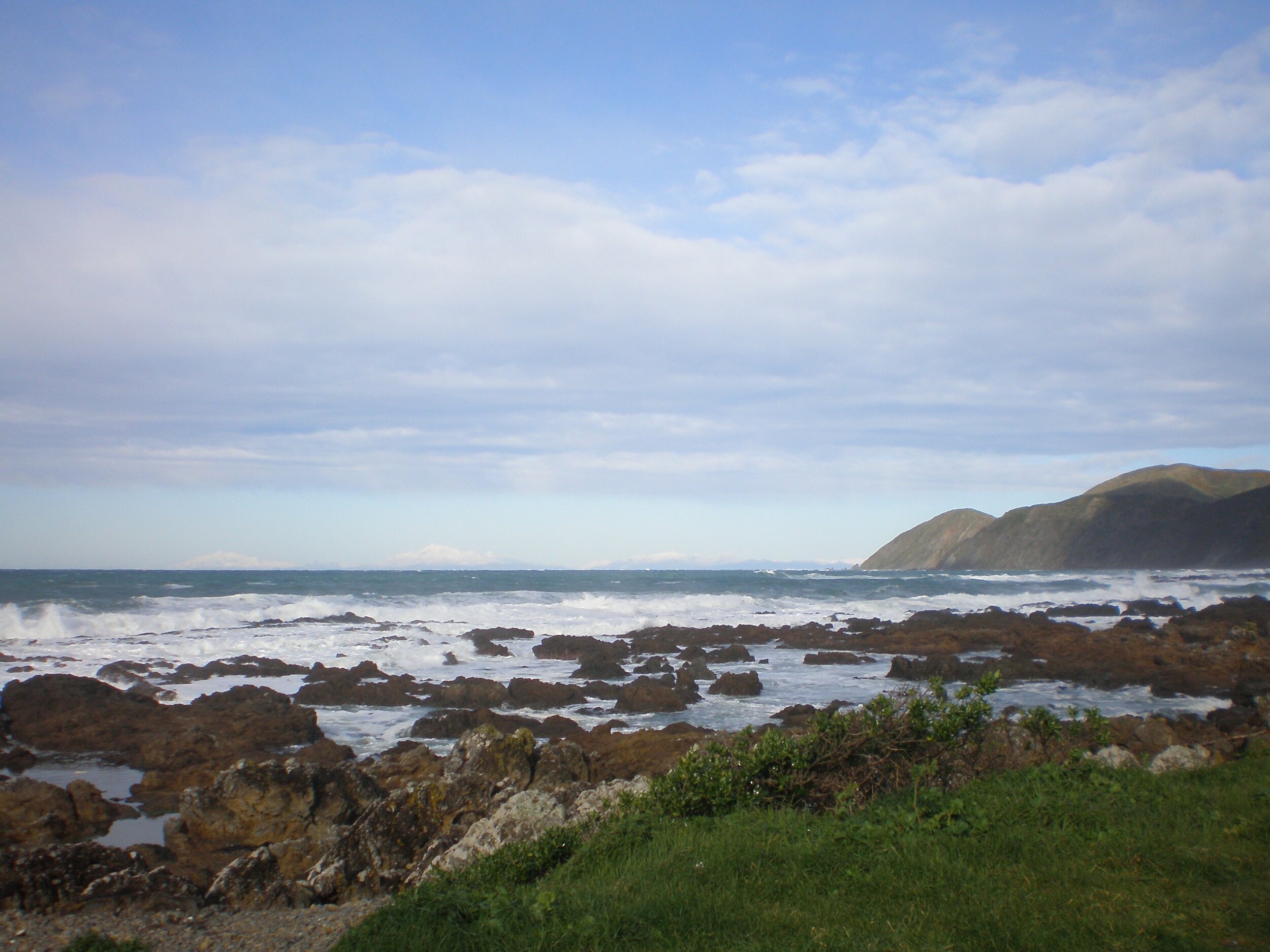
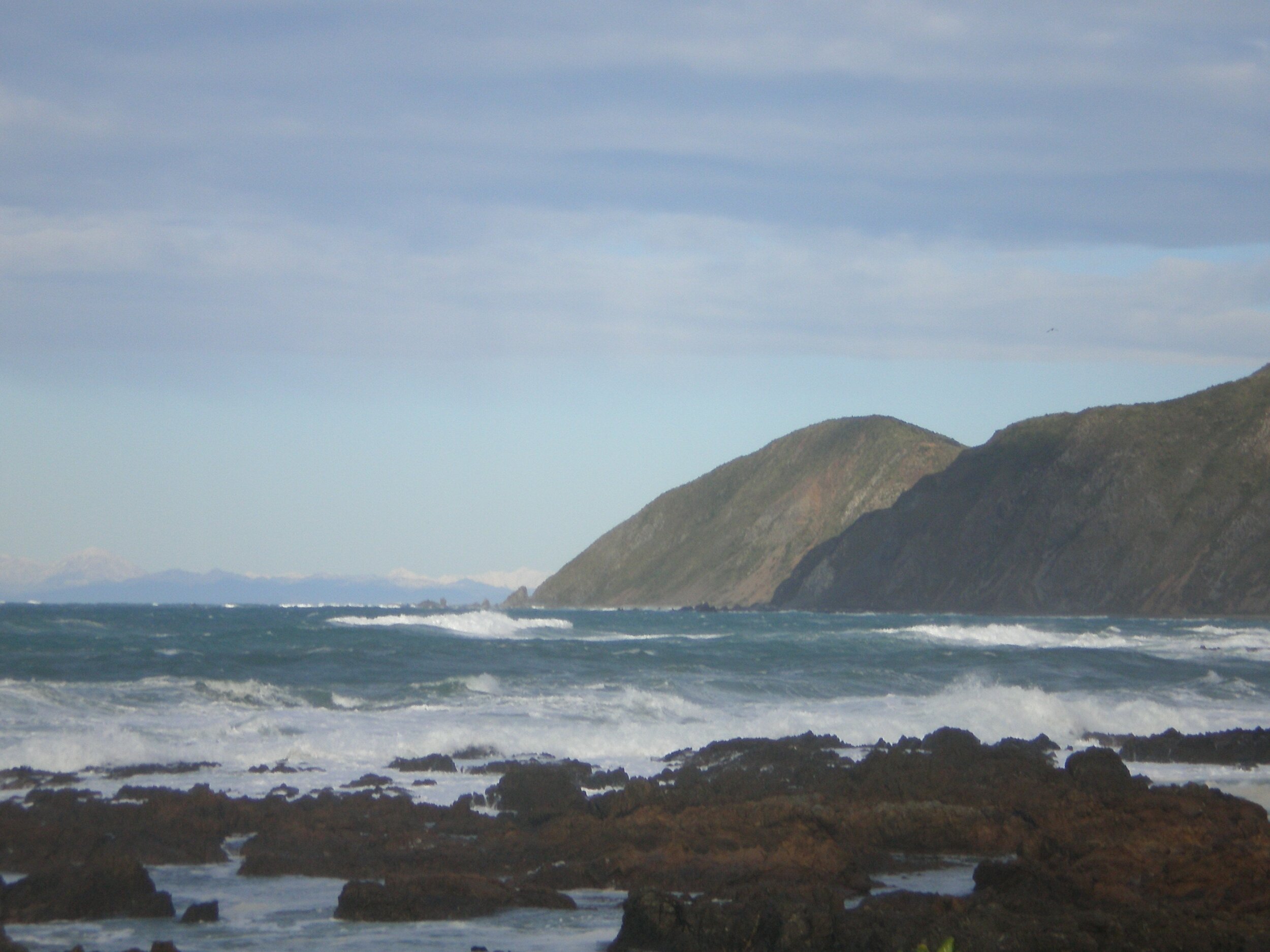
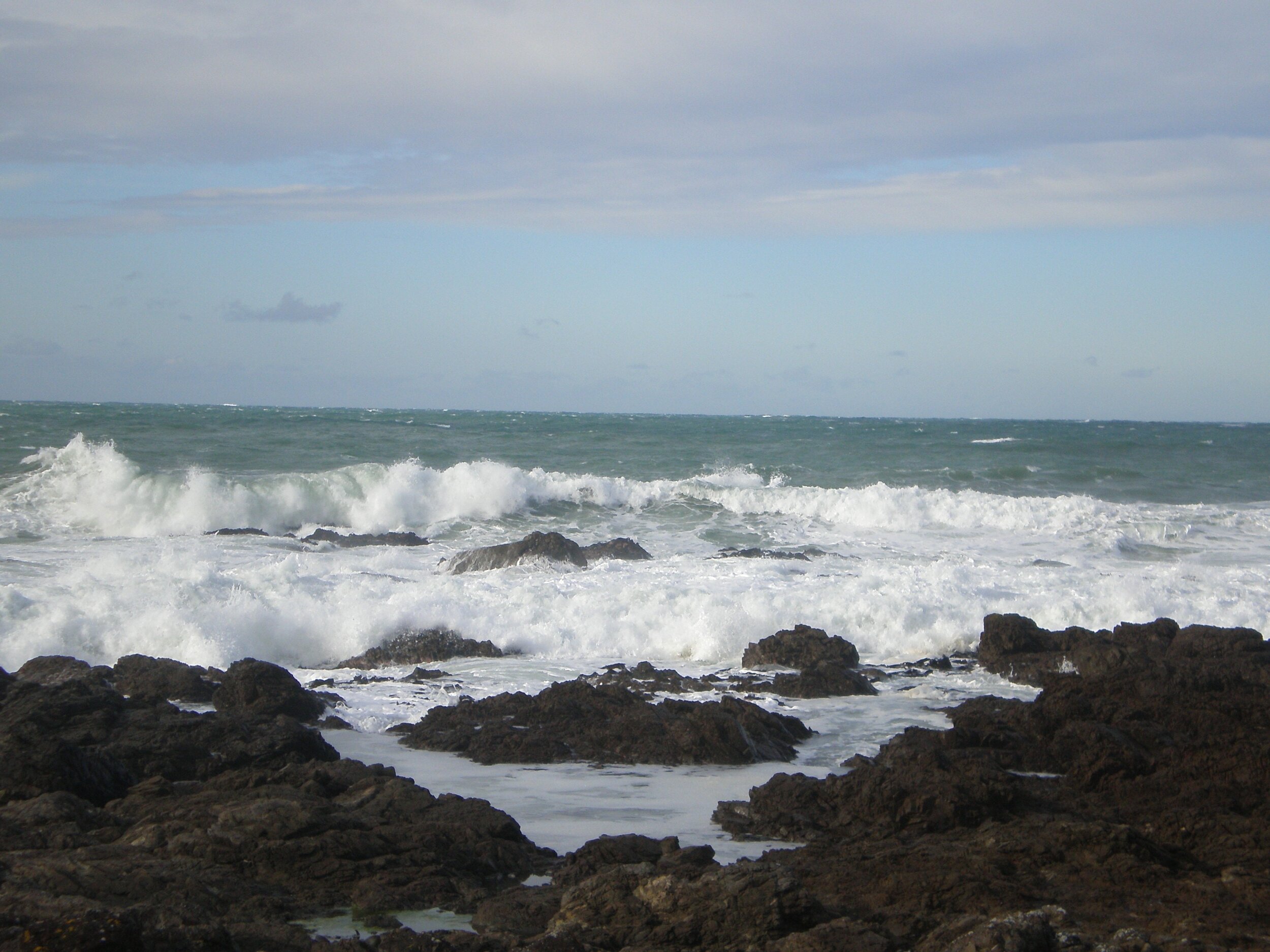

Colours
I painted this artwork using oil paint and the colours I used in this painting are as follows:
- Titanium white
- Burnt sienna
- Yellow oxide
- Quinacridone magenta
- Ultramarine blue
- Cobalt teal
- Phthalo green (optional)
Brushes
Here is a list of the brushes I used in this painting:
- No.5 flat
- No.2 flat
- No.3 filbert
- No.1 round
- No.0 round
- No.00 round
- 3/8 dagger
- 1/4 dagger
First Stage – Blocking in the Painting
I am painting on loose linen that I taped to a board and the painting measures 7” x 10”. Prior to painting I toned the linen canvas with a layer of burnt sienna which adds vibrancy to the painting.
I sketch out the composition using a No.1 round brush with burnt sienna mixed with Liquin Original (Liquin). I am using Liquin as a medium to thin the paint, it also has the advantage of speeding up the drying time.

I started this painting by establishing the main shadows and dark values first. This helps to set up a tonal dynamic in the painting that makes it much easier to paint all the areas in light afterwards.
The cloud shadows are a mix of ultramarine blue, burnt sienna, titanium white and I also mix in a little quinacridone magenta to give the shadows a violet tint.
The cliff shadows are a mix of ultramarine blue, yellow oxide, quinacridone magenta and titanium white. I have made the cliff shadows much darker than the cloud shadows so as to bring it forward in the painting.
I reserve my darkest values for the rocks in the foreground with a mix of ultramarine blue and burnt sienna to create a dark tone.
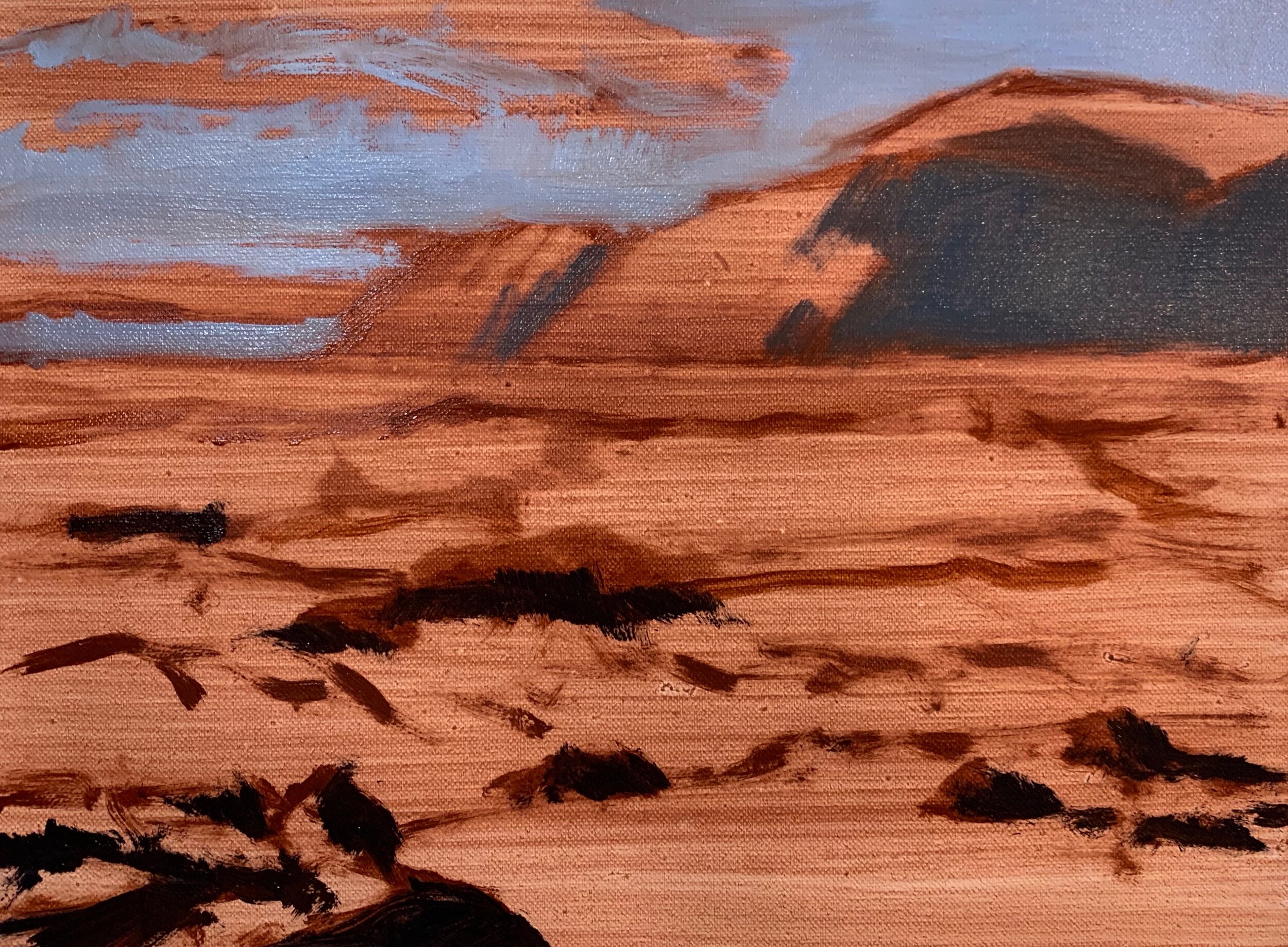
Once I have painted the shadows I return to the sky and begin painting the cloud highlights which is a mix of titanium white and a little burnt sienna which gives the highlights and orange cast to it. The cloud highlights also mix in nicely with the cloud shadows as I have already used these colours in the mix.
I paint the sky with a mix of ultramarine blue and titanium white. I use more titanium white in my mix for the sky in the distance and I also introduce a little cobalt teal.
I use my cloud highlight mix to start marking in the lighter tones in the sea and breaking waves in the foreground.
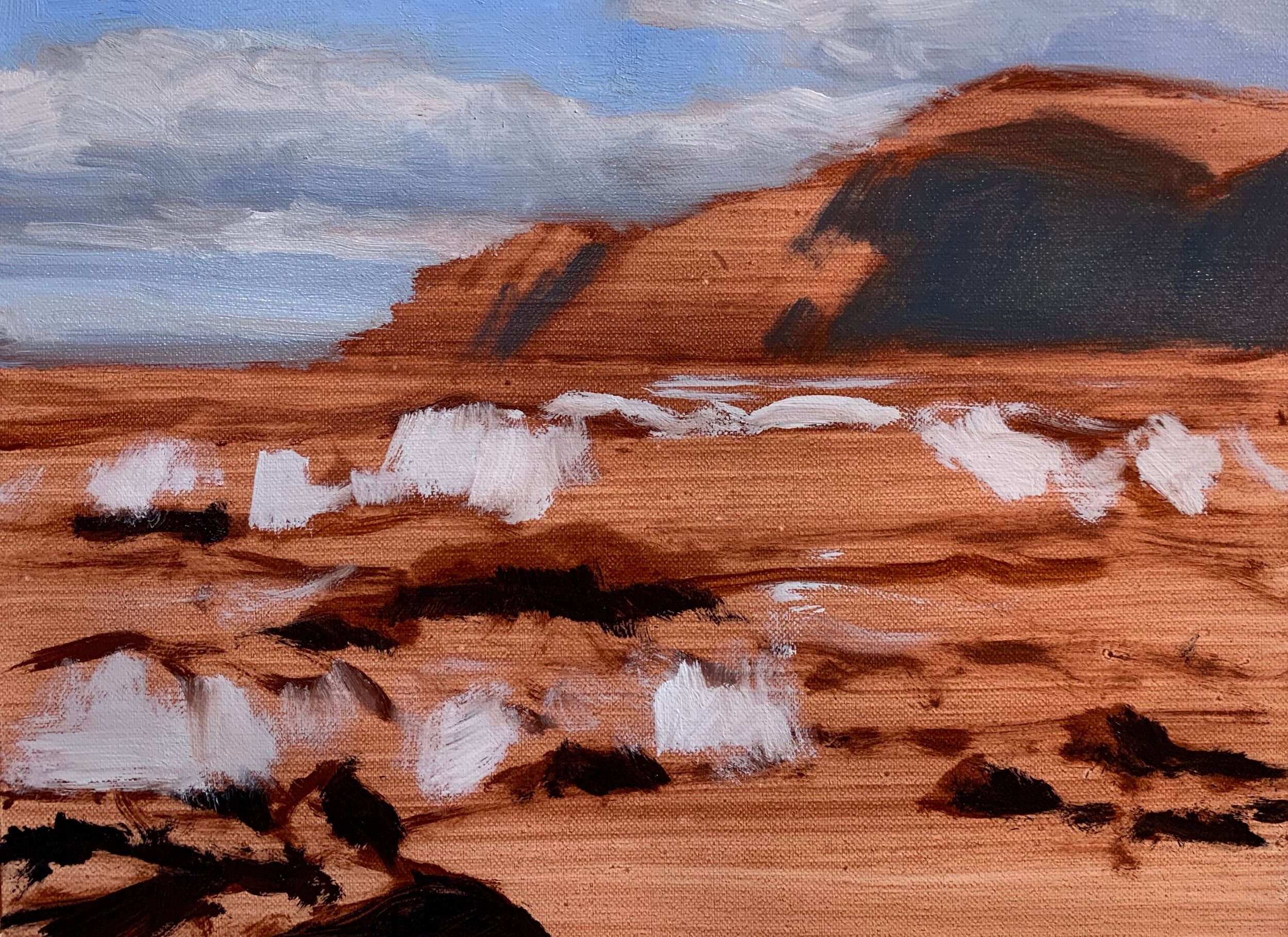
I paint the areas of the cliffs that are in light with a mix of ultramarine blue, yellow oxide, quinacridone magenta and a little titanium white. In places I also add a little phthalo green to increase the saturation and add texture and interest to the cliffs.
I paint the main body of the ocean in the mid ground with a mix of ultramarine blue, yellow oxide and titanium white.
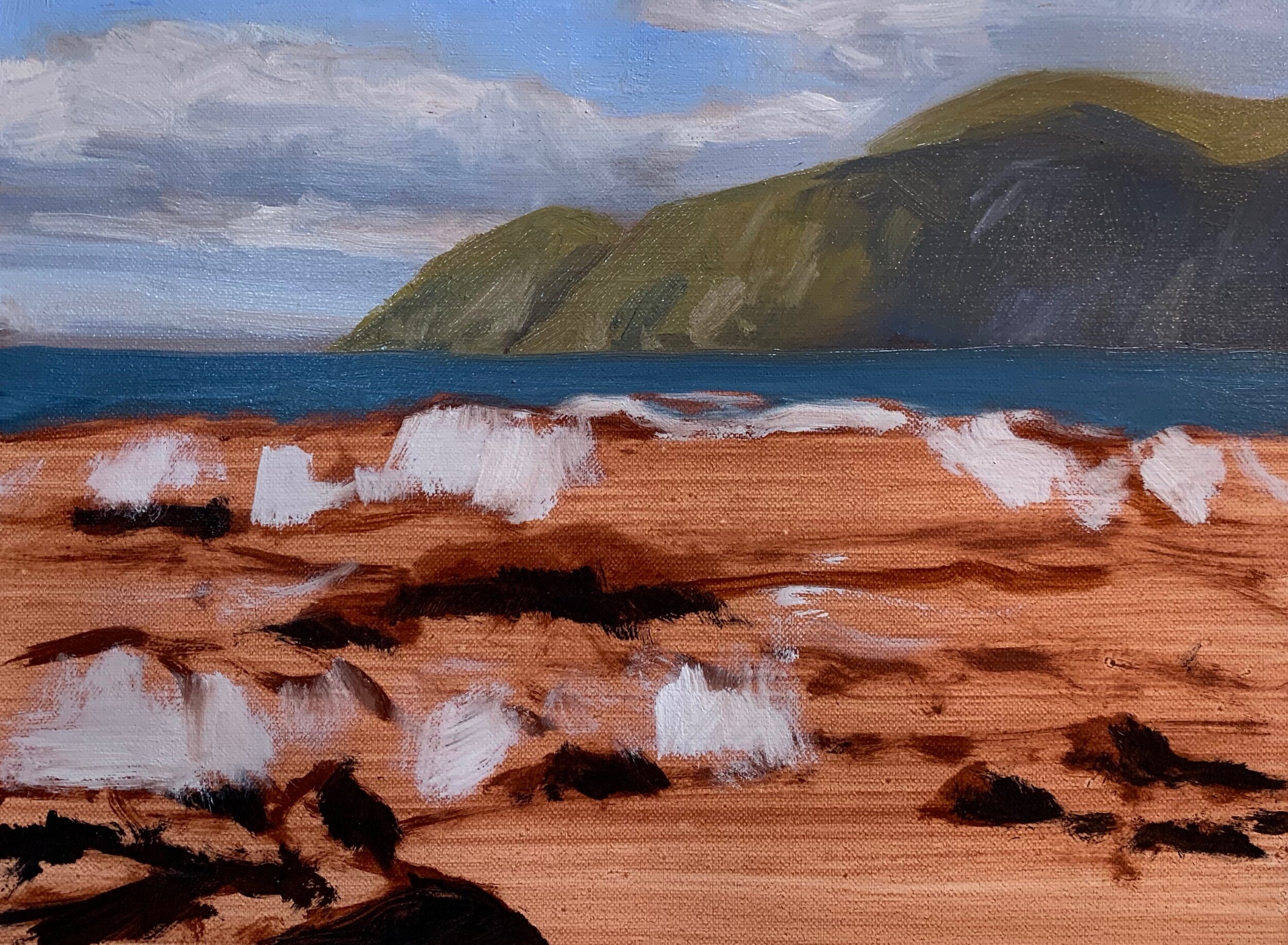
For the face of the breaking wave I use my existing sea mix that I used in the mid ground but mix in a little more yellow oxide and introduce a small amount of phthalo green,
I paint the rest of the moving blanket of foam in the foreground with a mix of ultramarine blue, burnt sienna, titanium white. This part of the painting is in the shadow of a cloud so the value needs to be darker so the breaking wave that is in full sunlight will stand out more.
For the darker shadows in the foreground I have used more ultramarine blue in my mix and less titanium white.
I paint the reflected light in the foreground rocks with a mix of ultramarine blue, burnt sienna and a little titanium white.

Stage Two – Modelling and Adding Details
I allowed the painting to dry so I could start the modelling stage where I worked on individual zones in the painting, preparing them for more details to be added later on.
I return to the sky and refine the shapes of the clouds by adding more highlights. I am still using the same that I used during the block-in stage.
I work on the cliffs using the same colours as I used in the block-in stage but adding lighter layers of paint. I’ll be saving my lightest tones until the very end of the painting.
I begin adding more details to sea breaking wave and white water / foam blanket in the foreground. As I work on these zones I am building up the details adding lighter layers of paint with each pass using the same colours before during the block-in process.
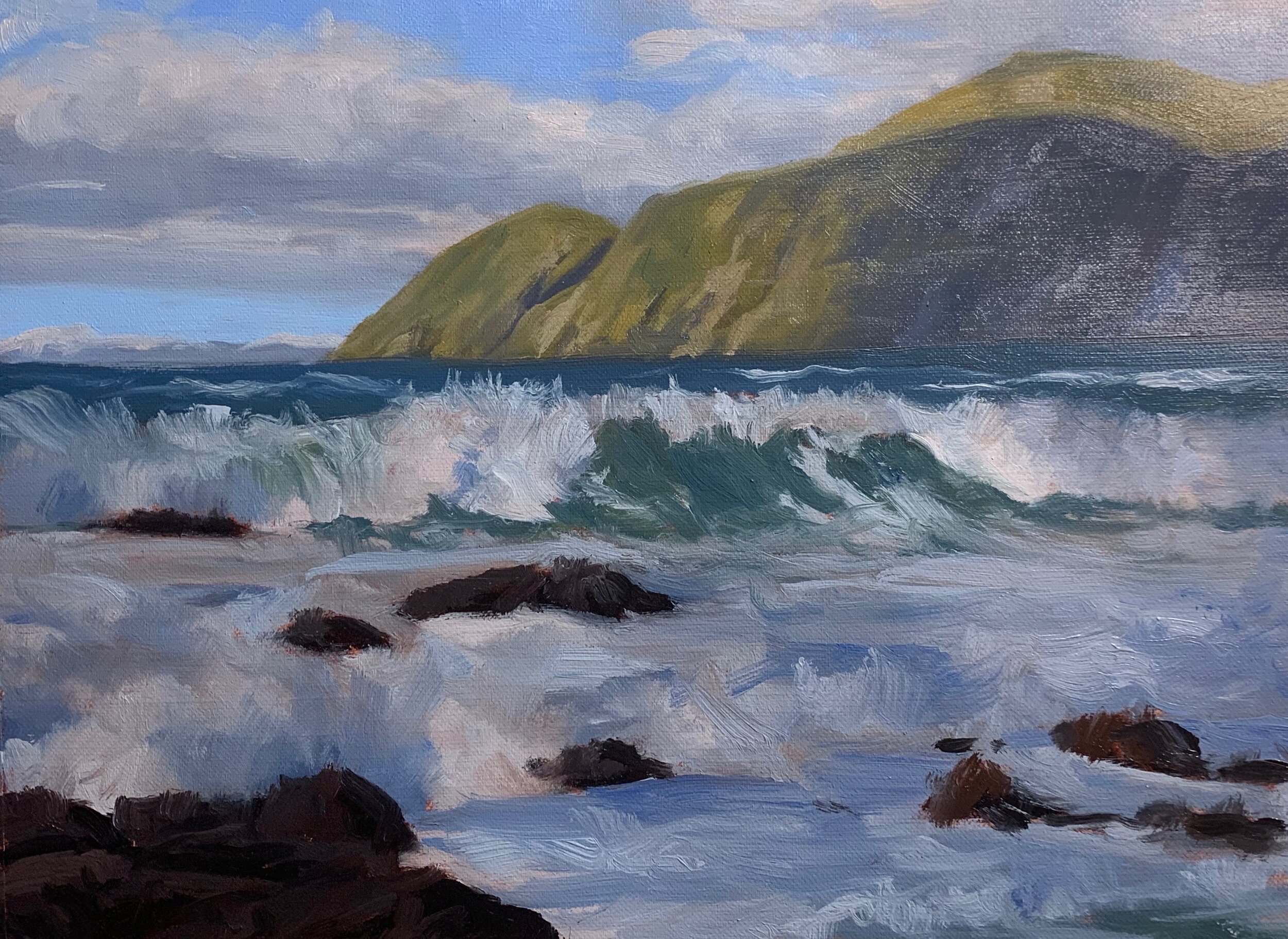
Last Stage – Final Details
I finish the painting by adding the final highlights to the breaking waves and for this I am using a mix of titanium white with a little yellow oxide to warm up the mixture. I sparingly add a few highlights using a No.0 round brush to emphasise the breaking wave and a small area of white water in front of it. These light values are what is going to draw the eye to the breaking wave.
I paint a few highlights on the rocks with a mix of burnt sienna, ultramarine blue and titanium white and I am using more burnt sienna and titanium white in my mix.
I finish up the painting by adding a few seagulls.

Thanks for reading 😊